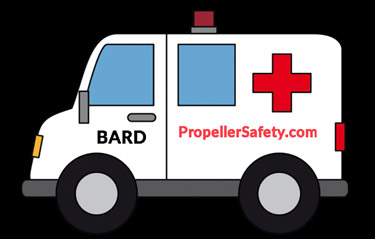Below is a list of the special projects the PropellerSafety.com is working on, in addition to maintaining our existing web site, recording propeller accidents on our Media Coverage of Propeller Accidents Blog, and other elements of our mission.
Some projects are already well underway, some may be carried over, but this is our agenda for 2024 as of December 2023.
2024 PropellerSafety.com Projects
- Completing and Publishing our study on the mechanics of pontoon boat bow riding propeller accidents.
- Releasing some artwork we have developed to promote boat propeller safety in a unique way.
- Completing and Publishing our study of propeller inflow that promises to produce some very interesting results.
- Bringing a new look and increased user friendliness to PropellerSafety.com
- Exploiting AI in unique ways
In addition we will be maintaining several existing projects including:
Boat Propeller Guard Projects
- Closely following the rapidly developing field of virtual propeller guards.
- Keeping alive the Don’t Wreck Your Summer Public Service Announcement (PSA). The boating industry effectively banned USCG from airing a high impact video PSA featuring a propeller accident.
- Promoting the concept of Flip-Up guards for houseboats and pontoon boats. It is a convention cage except the end cover (cap) to the rear flips up when underway due to a tab near the bottom of the flip up portion. The tab creates enough weight to pull the cap down when at rest, and enough resistance to flow when going forward to cause the cap to rise and ride parallel to the surface when underway. The design reduces drag when underway, while still providing full protection to the rear when stopped or in reverse.
- Promoting the concept of retractable propeller guards. Guards that can be retracted at speed (or automatically retract) to minimize the problems some guards have at speed.
Boat Propeller Accident Data Projects
We also maintain several accident data related projects:
- Continuing to promote Post Sale Monitoring of Product Safety such as boat builders using the U.S. Coast Guard Boating Accident Report Database (BARD) to monitor their boats in the field for any potential issues.
- Continuing to archive and log media reports of boat propeller accidents.
- Developing lists of similar accidents for various propeller accident scenarios, while updating the lists we have already established from time to time.
- Calling attention to the ten thousand plus accidents reported to BARD but invisible to us due to state privacy issues, involving a commercial or state owned vessel, and other reasons.
- Monitoring industry statements about propeller accident data and making sure those comments are consistent with existing data and events.
Miscellaneous Projects
- Monitoring industry statements about propeller safety issues and make sure those comments are consistent with existing data and events.
- Closely following the rapidly developing field of detecting objects in the water (logs, shallow bottom, floating trees, debris, etc) before they are struck by the vessel.
- Assisting in reviewing ABYC proposed standard updates
- Maintaining the ability of our site to be viewed from mobile devices.
Back Burner Projects
Some items always on the back burner for future attention include:
- We have been thinking about creating a Propeller Safety Hall of Fame to call attention to those who have or are laboring in this field.
Feedback
If anyone has any comments, suggestions for areas of study, or would like to help in these efforts, please see our How Can I Help page or contact us.
